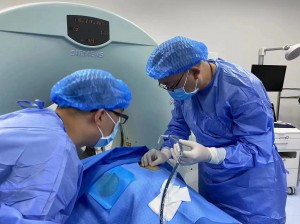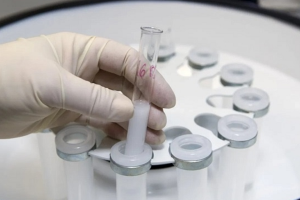With the popularization of cryogenic technology, the application of low-temperature liquids such as liquid nitrogen, liquid oxygen, liquid argon, liquid hydrogen, liquid helium, liquefied natural gas, and liquid CO2 is becoming increasingly widespread. As a result, the demand for low-temperature containers is continuously increasing.
1.Cryotherapy
Since the success of cryogenic treatment for Parkinson’s disease by Dr. I.S. Cooper in New York in 1963, cryotherapy has made significant advancements in medical procedures. Its advantages include minimal bleeding, less pain, simple and quick procedures, and minimal side effects. This method has been applied in the treatment of various diseases.
For example, in dermatology, it is used for the treatment of hemangiomas, freckles, sebaceous gland tumors, scars, nodules, bromhidrosis, folliculitis, flat warts, limited psoriasis, and discoid lupus erythematosus. In ophthalmology, it is used for cataract removal, retinal detachment, and cryo-adhesion. In gynecology, it is used for cervical inflammation, functional uterine bleeding, menorrhagia, and controlling cervical erosion. In otolaryngology, it is used for allergic rhinitis, nasopharyngeal angiofibroma, jugular bulb tumors, vocal cord papilloma, and lesions in the ear and throat. It is also used for the treatment of prostate enlargement in urology, as well as pituitary, liver, pancreatic resection, and more. Liquid nitrogen serves as the cryogen in cryotherapy and is supplied and stored in cryogenic containers. Since the late 1970s, clinical applications of cryotherapy have gradually increased in China, and many large hospitals now offer cryotherapy services.
2.Cryogenic Preservation
Since the successful long-term cryogenic preservation of sperm by Polge in 1949, cryogenic preservation has been extended to the long-term freezing of blood, bone marrow, corneas, cells, skin, cartilage, nerves, blood vessels, eyeballs, and more. For example, skin cryopreservation has been practiced overseas since 1973, with 700,000 square centimeters of preserved skin used as an important source for rescuing patients. Progress has also been made in the cryogenic preservation of human organs such as kidneys, pancreas, heart, and small intestine. South African scientists have successfully cryopreserved donated hearts indefinitely in liquid nitrogen until transplantation. This breakthrough has led to the establishment of heart donation banks, providing exciting prospects for organ transplantation. In China, significant progress has been made in cryogenic preservation technology. The first liquid nitrogen cryogenic eye bank was established in Qingdao in 1987, followed by the establishment of a cryogenic bone bank in 1991, which has stored over 700 pieces of viable bone. In 1994, the human cryogenic skin bank was established in Zhengzhou.
Post time: Jun-25-2023


